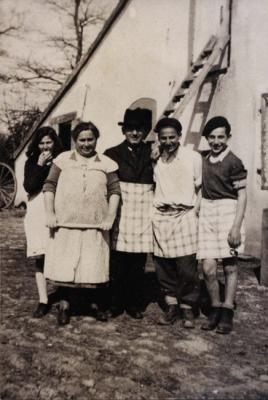“We left Toulouse and went to the village of Pujaudran, some thirty or fifty kilometers from Toulouse. A Jewish family, the Rubinfelds, moved there before the war, and earned their living growing fruits, wheat, and other cereals.
In order to ensure that the produced grain adhered to the highest level of kashrut, even before sowing the seeds, Rabbi Lichtenstein and my father kept watch over the grains and continued to be responsible for the process until the day the wheat was cut and ground to flour.
Just a few days after Tu B’shvat (Jewish New Year for Trees), my father started to look for a place and an oven to make the matzahs, since Passover was not far off. He found that the Rubinfeld family’s oven was the best option and it was cleaned and prepared to be used to make matzah.
For a few days, my parents, my sister Hilda, my brother Michel, and I worked making matzah. Mother made the dough, flattened it, and cut it into pieces. Our role as kids was to make rows of small holes with a fork in order the make the matzahs flat. Father put the matzahs into the oven and took them out.
A few days after we finished baking the matzahs, Father wrapped part up of them and told me, “Chaim, you are going to do a mitzvah - you are going to bring these matzahs to Rabbi Rubinstein in Lyon. Dad went with me to the Pujaudran bus station, and I went from Pujaudran to the train station of Toulouse from where I took a train to Lyon. The trip took about seven hours, and when I found Rabbi Rubinstein’s house, his wife and daughters Tania and Jeannette, were at home. I gave them the matzah and returned to Toulouse and Pujaudran the next day, happy to get home.
Only many years later did I understand what kind of faith my father had to send a twelve-year-old boy on such a trip with matzahs in his bag.”







